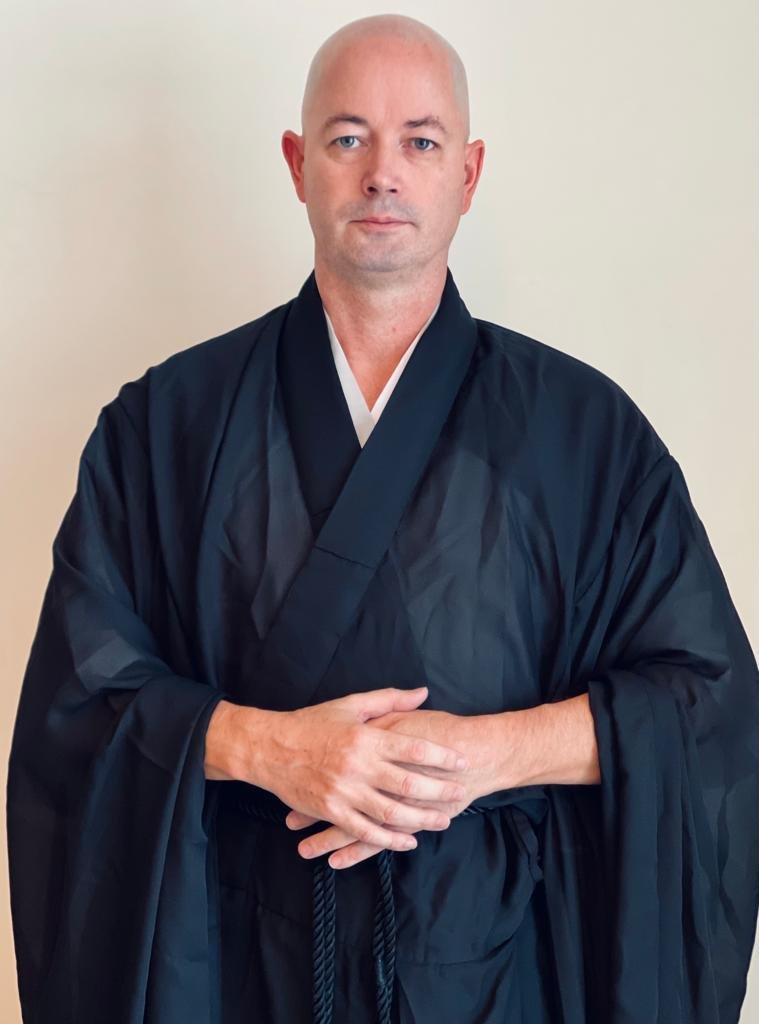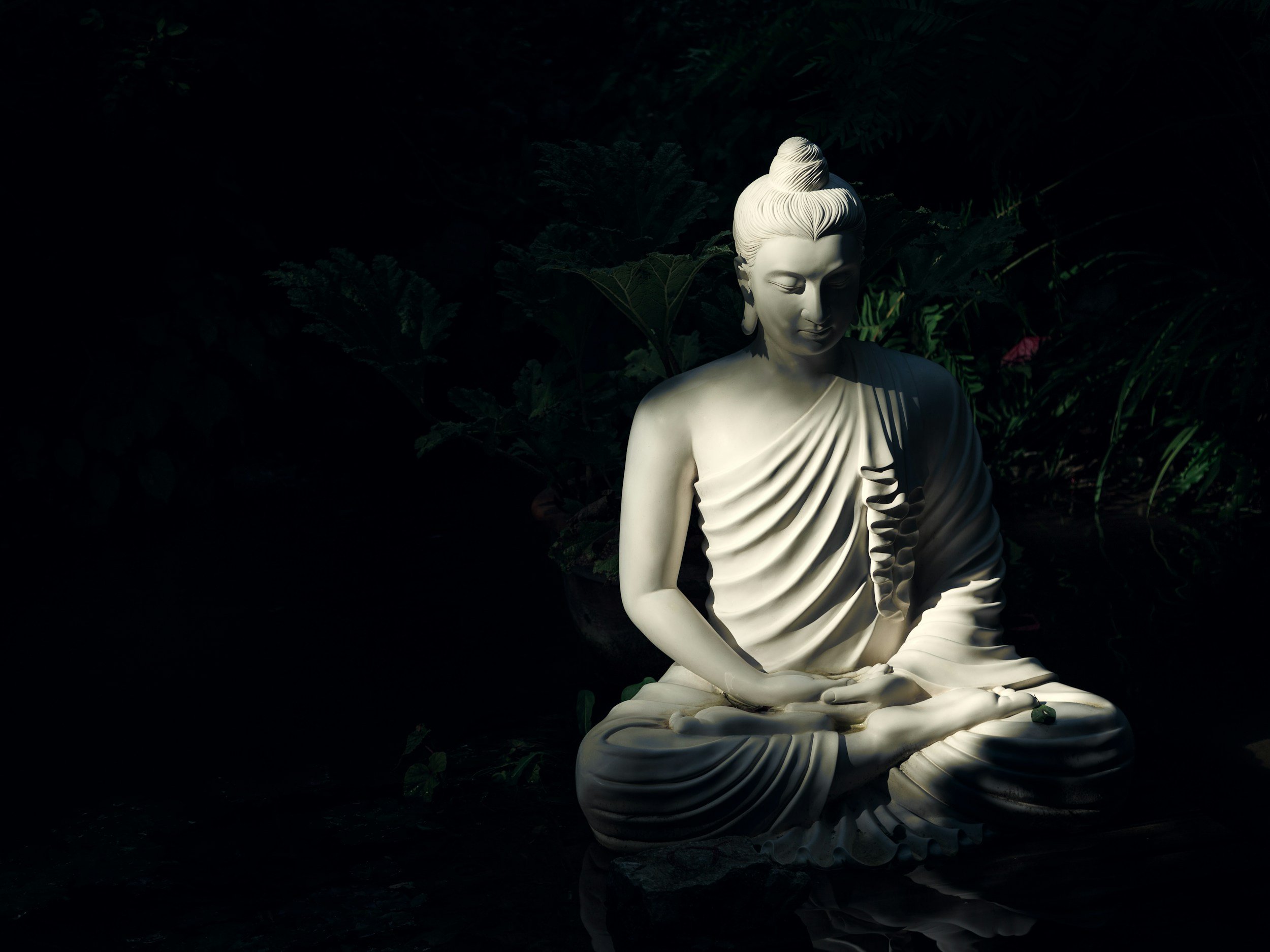
What Are Emotional Koans 2.0?
With Jun Po Roshi and Karla McLaren’s true teachings in hand, we are developing a tailored approach to emotional self-inquiry and koan work. This broader approach aligns with modern psychological insights and traditional Zen teachings, ensuring a more comprehensive integration of emotional wisdom into spiritual practice.

Be the Best Form of Yourself
One of the things I love about Hollow Bones is the Mondo Zen process, which has brought the practice of koans in a way that the Western mind can understand.

Expanding Consciousness
Hosho Don Koehler
It's the sitting practice that becomes more and more important. The psychedelic experiences become less and less significant because you're already experiencing that expanded consciousness and altered states from the practice itself.

Why Rohatsu
Our Rohatsu practice offers the opportunity to celebrate the simplicity of practicing together. As a sangha, we sit together as the Buddha yet to come, awakening our connections with all beings.
Join Us December 7th at 4:30 pm - 4:30 am
Come for any portion of the evening!

Part Of Getting The Robe Is To Say I'm Part Of Spreading The Dharma
Nanda Nina Lynch
If you look at it historically, it’s not proselytizing. It’s saying the Dharma has to spread. Nature has to move the seeds, either through the wind or through a bird, picking it up and dropping it somewhere else. The Dharma spreads. So part of getting the robe or the rakasu is to say I'm part of the spreading. So I bring it somewhere else.

There's a Buddha Inside of You
Kenshin Cian Whalley
II found out how magic works, manifestation works and how changing the mind and the field around us works. And then looking back at tantric Buddhist tradition, I recognized that the initiatory practices are the path. If you break down all of the facets of the prostration, it really is a magical practice meant to transform your mind into the mind of a Buddha

We Can Go Deeper With Understanding Emotions
Fugen Tom Pitner Roshi
All 11 Roshis are of the eighty-fourth generation. That's how you spread the Dharma. Each of us takes a branch, accepts responsibility and does our best to make sure that Dharma continues.

I Think Everybody Brings Gifts
Engo Dohi Michael Jackson
But really, you don't need to be a priest or anyone to teach you. You just have to have the knowledge. I think everybody brings gifts. We take in what we can learn from each other.

We Can Provide The Answers To Our Own Dilemmas
Koto Washi Dallas Chief Eagle
We want to be invited into sacred space and not step on it or provide the answers.

Exploring the Depths of Meditation and Healing
Ekai Joel Kreisberg
My belief is that Jun Po Roshi’s teachings offer a unique perspective on dealing with emotions in a Zen setting. By articulating a clear standard, and training competent practitioners, we created a more consistent cadre of facilitators who can effectively reach a broader audience

Open, Honest and Vulnerable
Ming Po Larry Matthews - Shuso
With Mondo I can directly see when I make a difference.

Dokusan, Daisan and Spiritual Counseling
“There are really no masters of Zen... there is sometimes, an insightful and well-trained teacher who can hold up the correct mirror. In this mirror, we can find reflected our true spiritual image, our own spiritual truth.”

What is required to practice an emotional koan
For Jun Po Roshi, and for koan work, it’s not enough to notice the contraction, release the contraction, to drop into Clear Deep Heart/Mind. One must respond to the circumstances.

Grant Report - Mondo Zen Intensive for BIPOC
“Illuminating. It was beautiful to practice with many sangha members I've only known online. Much growth, hunger to continue my path.”
- Enso Alberto Mendez
“I really appreciate that I didn't have to sit around with a bunch of white guys or gals. But I saw where there was a commonality between all those people.”
- Koto Washi Dallas Chief Eagle

The Heart of the Mothership
In November 2023, I arrived at Dai Bosatsu for 40-days of silent serenity, holding a heart burdened by the chaos of my everyday life and wanting to learn more about the roots of our Zen Buddhist path. I was ultimately motivated to jump into this world of deep spiritual contemplation after I made the choice to simplify and minimize my lifestyle earlier in the year.

What a Difference a Translation Makes: Satipatthana
Many translations of the Satipatthana Sutta can be found in today's libraries. I’ve been cycling through three translations - Bhikkhu Analayo’s Satipatthana: The Direct Path To Realization, Thich Nhat Hanh’s, Transformations and Healing: Sutra of the Establishments of Mindfulness , and a recently published Being Nature: A Down to Earth Guide to The Four Foundations of Mindfulness by Wes Nisker. Each bring a refreshing perspective. Let’s take a look.

Considering Sati of the Satipatthana Sutta
Sati can be translated as mindfulness or awareness. Patthana is Pali for foundation or cause. Satipatthana, Sutta is the Pali discourse recording Gautama' Buddha’s instructions for mindfulness. Often said to be the most succinct description of the practice leading to Buddha’s awakening, the Satipatthana Sutta offers a detailed articulation of mindfulness in four domains - kaya meaning body, vedana meaning feeling, citta translated as mind and dhammas meaning mind objects.

Diversity in our Dharma
For those of us who had the opportunity to sit with Jun Po Roshi and respond to his open-hearted transmission, its easy to recall his commitment to the dharma being available for everyone.

Peacemakers Zen
I am pleased to share that the board of directors at Shining Bright Lotus Meditation Society approved our joining the community of Zen Peacemakers International(ZPI). We will be affiliate sangha, which means that we are in alignment with the mission with mission of ZPI and that we conduct activities in the spirit of the Three Tenants, Non-Knowing, Bearing Witness and Taking Action.

Beyond Buddhist Modernism
Buddhist Modernism is a term use to describe meditation-based convert Buddhist modernist lineages that have emerged in the 20th century. These communities are in contrast to traditional Buddhist that generally maintain Asian cultural norms, which are characterized as “immigrant”, “ethnic” or “heritage” Buddhism, largely practiced by Asian Americans.